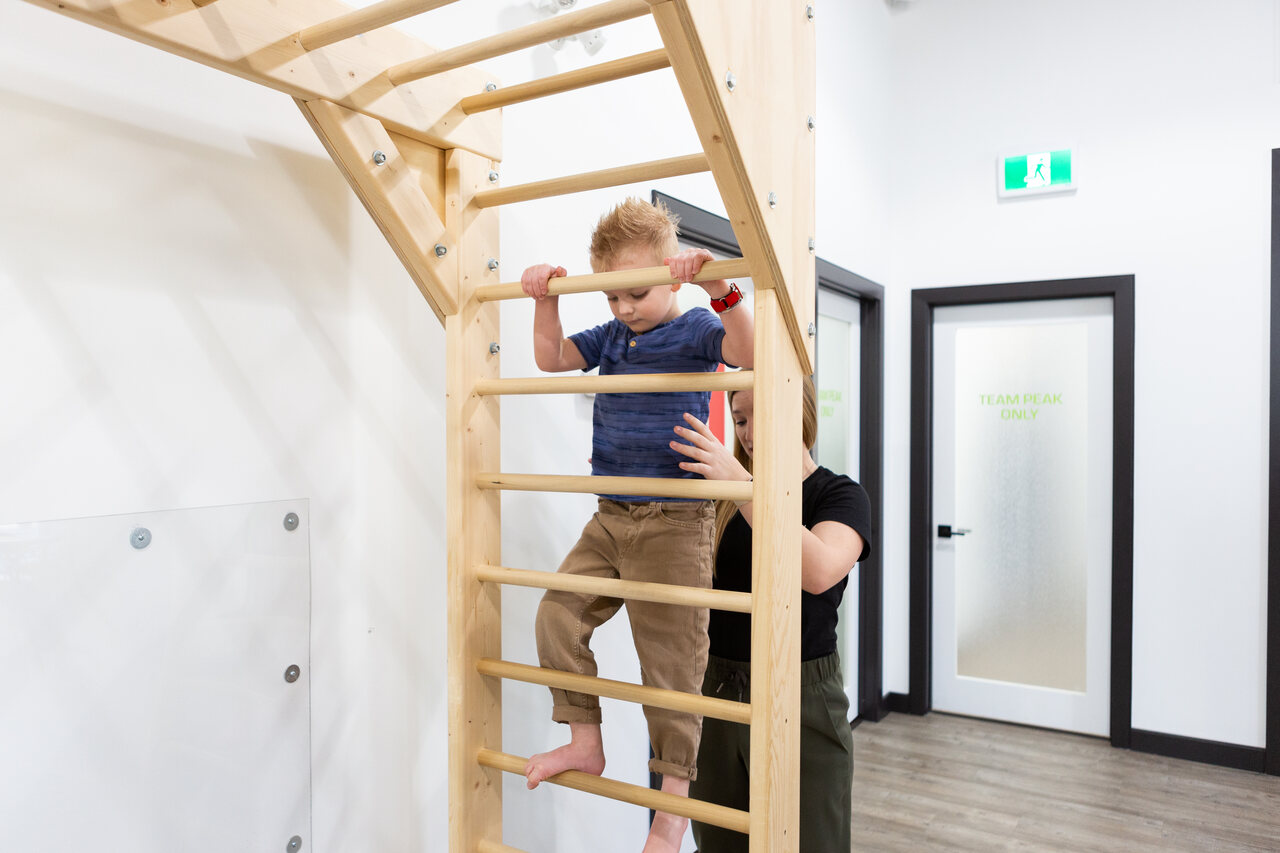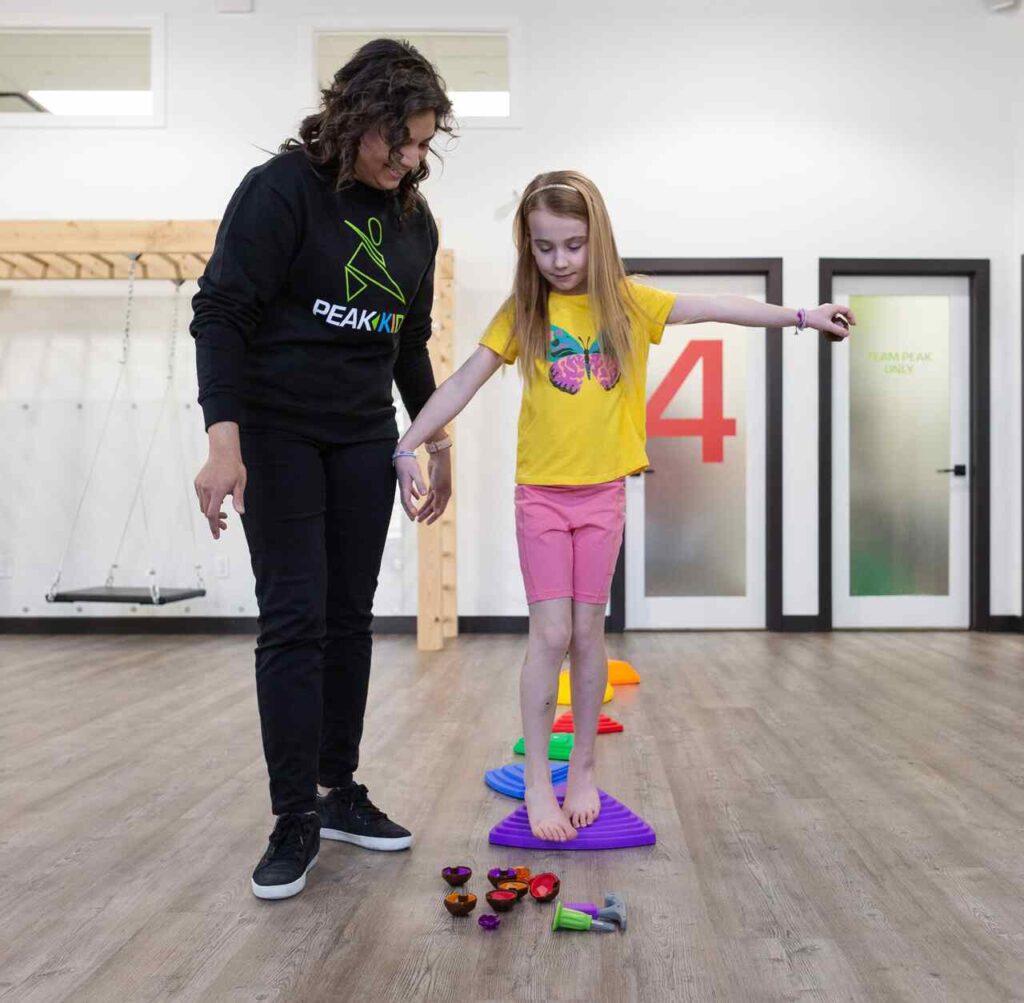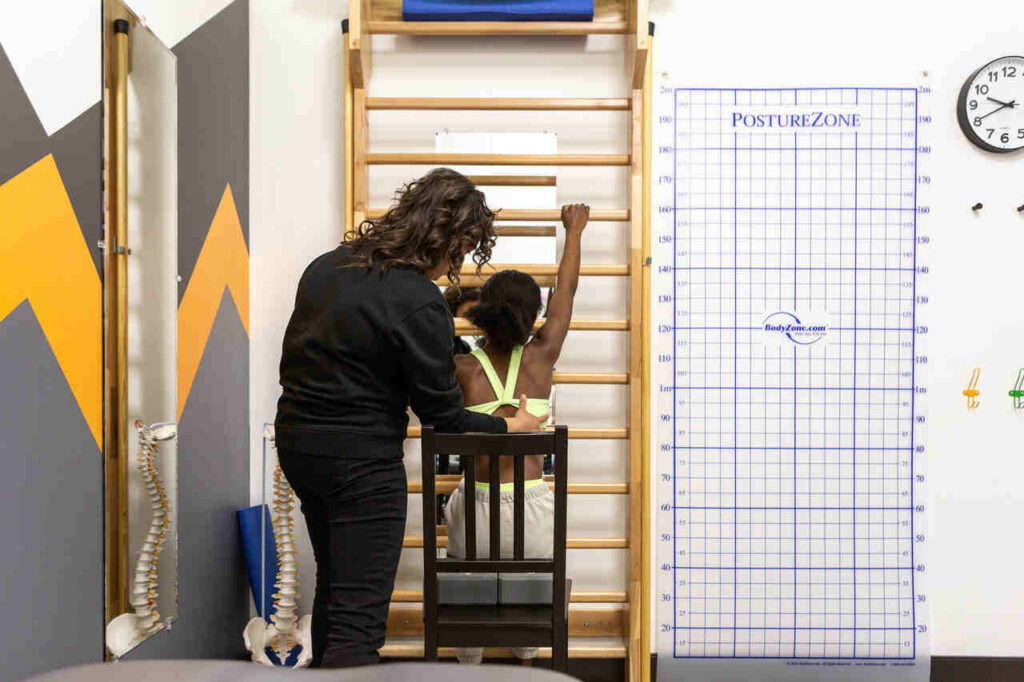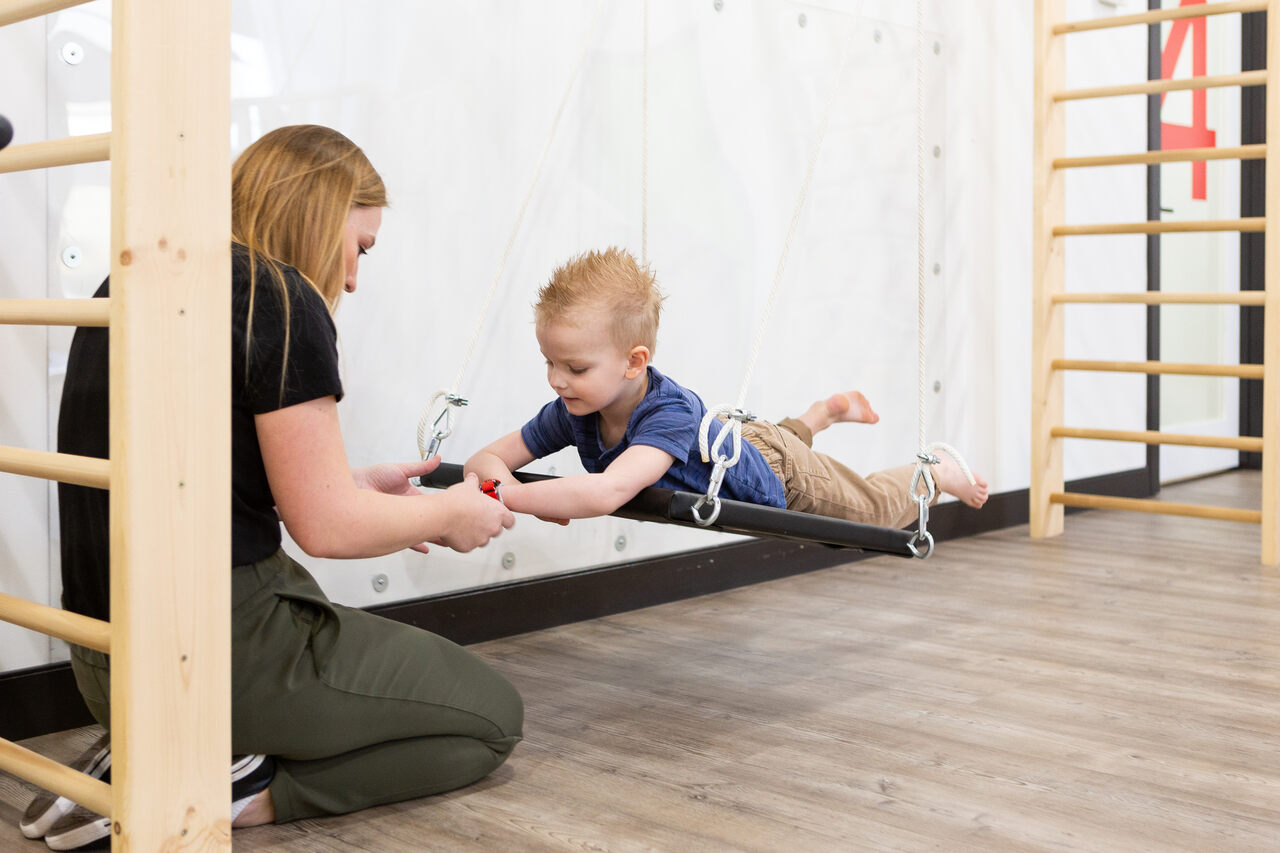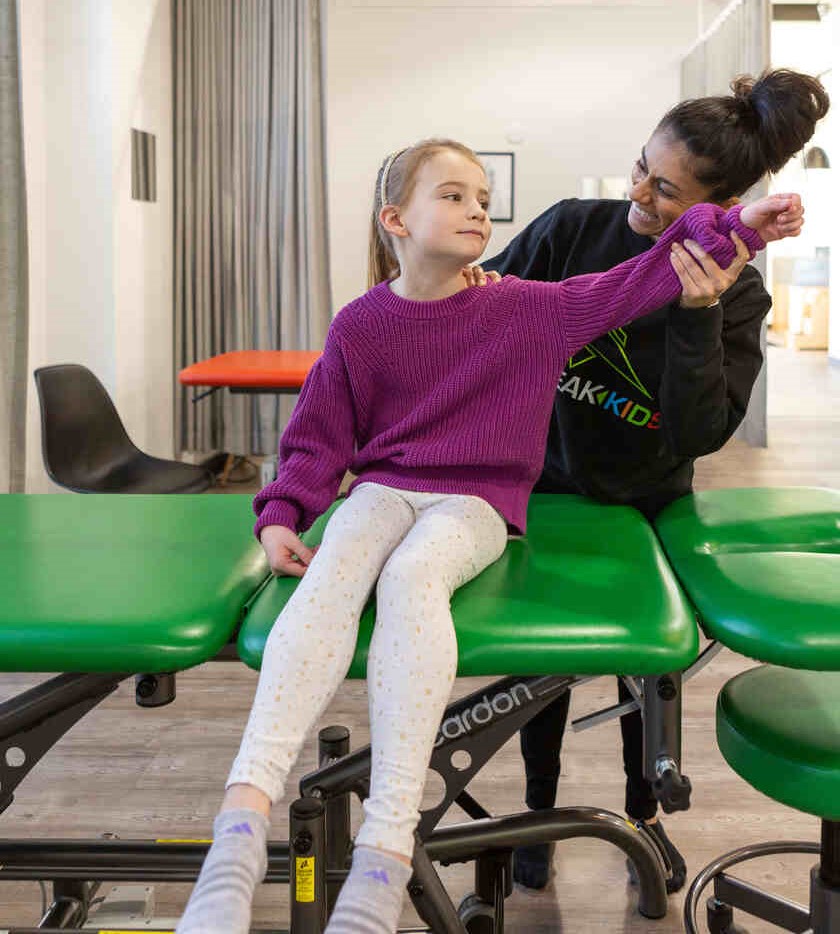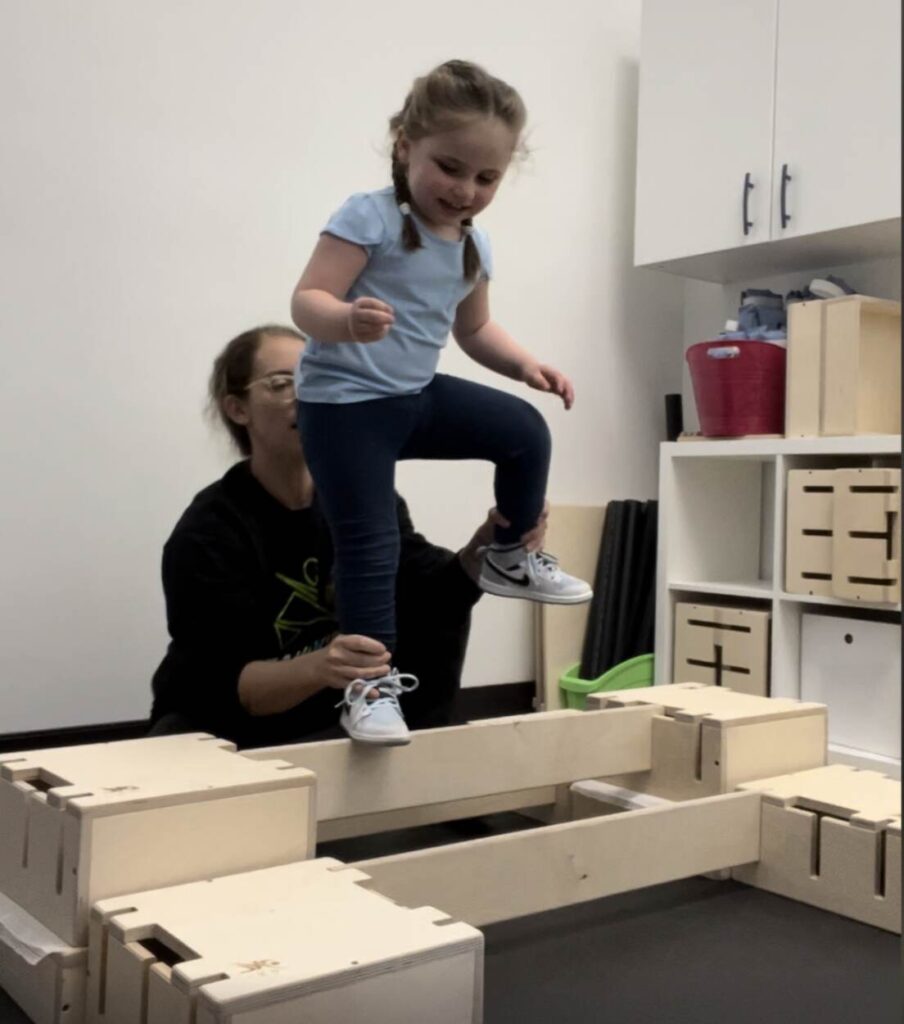Written by Physiotherapist Emma Bolt
“Hey Emma, what’s with those gold suits I see on kids during your DMI sessions?”. Thanks for asking, it’s a TheraTog! This blog post is all about the compressive garment used to act like a second set of therapist hands during DMI sessions.
What Are TheraTogs?
TheraTogs were designed by a pediatric physiotherapist named Beverly “Billi” Cusick to act as an extra pair of hands to help a child have more optimal posture and alignment while participating in activities. TheraTogs are an undergarment and are meant to be worn under the clothes in direct contact with the skin.
However, this is not ideal for a clinical setting both for sanitary reasons, but also for the practicality of dressing and redressing children during a 45 or 60-minute session, so we use them on top of the children’s clothing.
What Are The Benefits of Wearing a TheraTog?
TheraTogs are customized by a therapist based on the child’s unique musculoskeletal, postural, balance, or movement correction needs. Some of the concerns that TheraTogs may be used to address include:
- Leg positioning concerns such as excessive in-toeing, out-toeing, or scissoring walking patterns.
- Abnormal tone (including hypotonia and hypertonia).
- Abnormal trunk postures that can be manually corrected (TheraTogs are not used to address scoliosis).
TheraTogs are compressive in nature, so they provide a high level of proprioceptive input, or joint compression input, to build a child’s awareness of their body. By providing support to the trunk, a TheraTog may increase the quality of movement or level of participation a child is able to achieve while wearing the suit.
For example, a child who has a weak core or low trunk tone may tend to lean on their arms for support while sitting, but is able to reach for and play with toys while wearing a TheraTog. When used daily, a TheraTog provides live-in postural correction so that they move, play, and interact with the world in more optimal alignment. Since the suit is fabric, as opposed to a hard plastic that doesn’t bend or flex, a child will not become dependent on the TheraTog to be able to perform daily tasks.
Are There Any Conditions That A TheraTog Should Not Be Used With?
Yes, as mentioned previously, TheraTogs are compression garments. When compression is applied to the body, the pressure in our blood vessels is increased. A TheraTog should not be used for children with tachycardia or other cardiac arrhythmias, or for children with a VP shunt. Please inform your physiotherapist if your child has either one of these conditions.
How Do I Get A TheraTog of My Own For My Child?
Prior to discussing the potential of a family purchasing a TheraTog for their child, I ensure a TheraTog is supportive and appropriate through assessment and monitoring during DMI sessions. For some children, the benefit is obvious and immediate.
For other children, the benefit is minimal when considering the financial and time commitment using a TheraTog requires. If a TheraTog is determined to be beneficial and the family would like to purchase one for home use, Peak Kids is able to support families in this process.
Once a family has received their TheraTog, I provide in depth education on how to apply the TheraTog, store it, clean it, and lots of helpful tips and tricks to increase a parent’s comfort with the TheraTog.
When I put on a TheraTog for the first time, it took me 15 minutes to put on and 5 minutes to fall off. It is a skill, but with practice and the support of a knowledgeable therapist, families are able to provide their children with live-in postural correction to support improved stability and movement skill capabilities.
Key Takeaways
A TheraTog is a compressive undergarment used to improve posture and provide stability to the trunk. It can also improve a child’s awareness of their body. TheraTogs are customized for each child and can be purchased for home use.TheraTogs should not be used as a device to correct scoliosis, or for children with tachycardia, other cardiac arrhythmias, or VP shunts.
